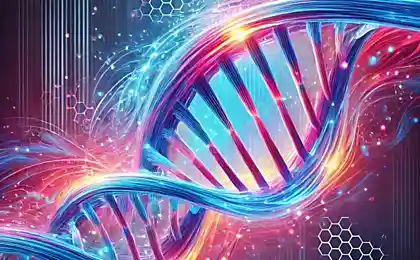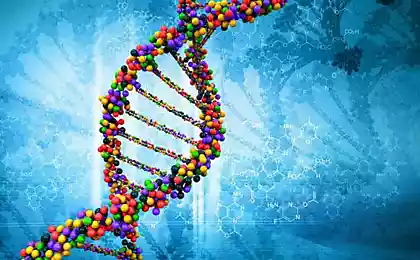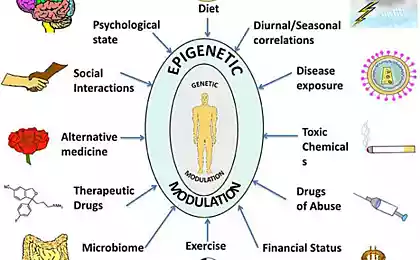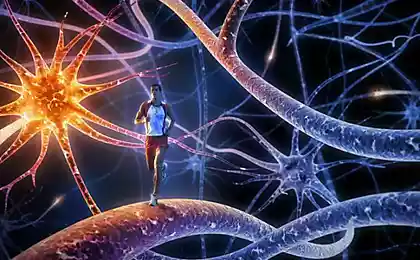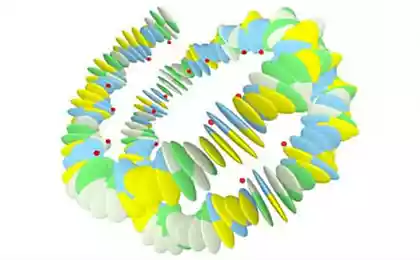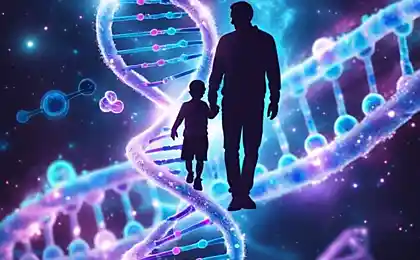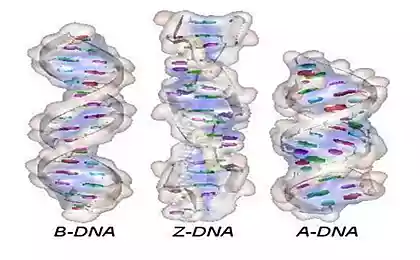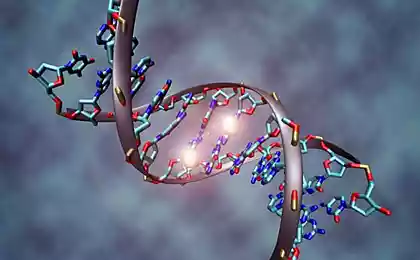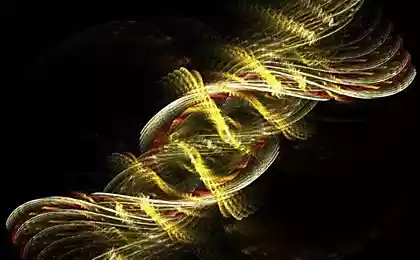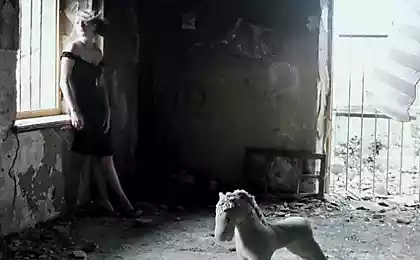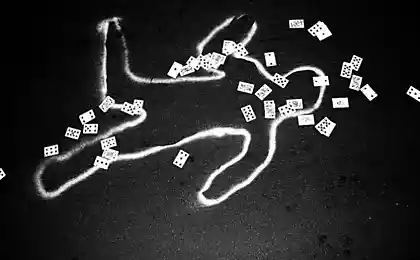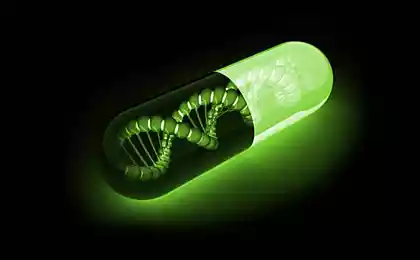501
Mitochondrial DNA and family history
When I was a child, asking his grandmother about the roots, she was told a legend that her distant great-grandfather married a "local" girl. I got interested in this and took a little research. Local Vologodskaya oblast – a Finno-Ugric people, the Veps. To accurately verify this family legend, I turned to genetics. And she confirmed the family legend.
What is a genetic test? Haplogroup (in population human genetics — the science that studies the genetic history of mankind) — a group of similar haplotypes having a common ancestor, which both haplotypes occurred the same mutation. The term "haplogroup" is widely used in genetic genealogy, where he studied haplogroup Y-chromosome (Y-DNA), mitochondrial (mtDNA) and MHC-haplogroup. Genetic markers Y-DNA is transmitted from Y-chromosome in the paternal line (i.e. from father to sons), and markers of mtDNA — maternal (from mother to all children).
Mitochondrial DNA (hereafter mtDNA) is passed from mother to child. Since only women can pass mtDNA to their offspring, testing mtDNA provides information about the mother, her mother and so on down the direct maternal line. mtDNA from mother to receive both men and women, for this reason, the testing of mtDNA can participate, both men and women. Although mtDNA mutations occur, their frequency is relatively low. For thousands of years these mutations accumulated, and for this reason the female line in the same family are genetically different from the other. After humanity has spread throughout the planet, mutations continued occasional appearance in separated by distance of populations of the once United human race.
The migration of mitochondrial haplogroups.Russian North.
I love history, nature and culture of the Russian North. This is because from there was born my grandmother, who lived with us and spent a lot of time to my education. But I think that for Belarus closeness even greater: because the Russian North has been inhabited kriviches, which also formed the core of the future of Belarus. In addition, the Pskov and Novgorod is an ancient Slavic centers, to a certain extent democratic, the Assembly (as well as Kiev and Polotsk). Suffice it to recall the history of the Pskov Veche Republic and the Novgorod Republic. For a long time, these territories were fluctuating between Lithuania and the Moscow Principality, but the latter took the initiative in the "gathering of lands". In other circumstances, the identity of this region could develop into an independent nationality. However, many are proud to call themselves "Russian North". As well as some of Belarus, distinguished Western Belarus (Lithuania, Lithuanians) from Eastern Belarus (Rusyns). Ask not to look at my words no political background. If Belarus Slavs mixed with Baltic tribes, in Russia — Finno-Ugric. This provided a unique ethnicity in different regions. Very accurately said Parfyonov, who hails from our neighboring villages: "I always feel their origins. Russian North — is very important to me. That is my idea about Russia, about our character, about ethics and aesthetics. South of Voronezh, for me, the other Russian." Interestingly, Parfenov there are in my family. Ekaterina Parfenova (1800-1904) is the grandmother of Cyril Kirillovich Koricheva (husband of Alexandra Alekseevna Zemskova). However, this common surname, so maybe relatives, maybe not.
Cherepovets, great grandmother on the left, grandmother on the right bottom, 1957?My mitochondrial group - D5a3a.
When sequencing ГВС1 — 16126с, 16136с, 16182с, 16183с, 16189с,16223Т, 16360Т, 16362С. This means that my mitochondrial group - D5a3a. This is a very rare haplogroup, even genetics was surprised in Belarus for the first time this is determined. In General, D is the Asian group. The scientists write that it is found in the gene pools of only certain ethnic groups of Northern Eurasia. Single D5a3-line identified in Tajiks, Turks, Koreans and Russians of Novgorod the Great. They all (with the exception of Korean) are characterized by 16126-16136-16360 ГВС1-motif, which is found also in some populations in North-Eastern Europe.
Selo Annino, 1917, my great-grandmother. Genome-wide analysis showed that the mtDNA of Russian and Mansi together in the form of hydrated cluster D5a3a and mtDNA of Koreans is represented by a separate branch. Evolutionary age of the whole haplogroup D5a3 is approximately 20 thousand years (20560 ± 5935), while the degree of divergence D5a3a lines mtDNA corresponds to approximately 5 thousand years (5140 ± 1150). D5 — group is distinctly East Asian. In Siberia is dominated by variants of D4. The most numerous and diverse D5 in Japan, Korea and southern China. Among Siberian peoples a variety of D5 and the presence of a unique purely ethnic patterns observed in the Eastern Mongolian groups, including the Evenki moralizirovaniya. D5a3 marked in the archaic version in Korea.A more precise analysis shows age D5a3a to 3000 years, but the parent D5a3 very ancient, there's certainly the Mesolithic.
Cherepovets, 1940 On the basis of available data it seems logical to assume the origin D5a3 somewhere in the far East between Mongolia and Korea) and its migration to the West through southern Siberia. Likely that my direct ancestors in the female line came to Europe about three thousand years ago, giving the roots in Finland, Korelia, among the local Finno-Ugric peoples: the Lapps, Karelians and Veps. When mixed with kriviches, these haplogroups moved to the modern inhabitants of Vologda and Novgorod. I have this haplogroup will not tell the children it is transmitted through the female line), but in Cherepovets live my wonderful cousin with the same haplogroup. So she will continue the journey through time. So genetics has confirmed family history.
My direct female line
The Village Of Erga, 1940
Cherepovets, 1956
Author Andrew Blueskin
P. S. And remember, only by changing their consumption — together we change the world! © Join us at Facebook , Vkontakte, Odnoklassniki
Source: www.beloveshkin.com/2015/07/D5a3a.html
What is a genetic test? Haplogroup (in population human genetics — the science that studies the genetic history of mankind) — a group of similar haplotypes having a common ancestor, which both haplotypes occurred the same mutation. The term "haplogroup" is widely used in genetic genealogy, where he studied haplogroup Y-chromosome (Y-DNA), mitochondrial (mtDNA) and MHC-haplogroup. Genetic markers Y-DNA is transmitted from Y-chromosome in the paternal line (i.e. from father to sons), and markers of mtDNA — maternal (from mother to all children).
Mitochondrial DNA (hereafter mtDNA) is passed from mother to child. Since only women can pass mtDNA to their offspring, testing mtDNA provides information about the mother, her mother and so on down the direct maternal line. mtDNA from mother to receive both men and women, for this reason, the testing of mtDNA can participate, both men and women. Although mtDNA mutations occur, their frequency is relatively low. For thousands of years these mutations accumulated, and for this reason the female line in the same family are genetically different from the other. After humanity has spread throughout the planet, mutations continued occasional appearance in separated by distance of populations of the once United human race.
The migration of mitochondrial haplogroups.Russian North.
I love history, nature and culture of the Russian North. This is because from there was born my grandmother, who lived with us and spent a lot of time to my education. But I think that for Belarus closeness even greater: because the Russian North has been inhabited kriviches, which also formed the core of the future of Belarus. In addition, the Pskov and Novgorod is an ancient Slavic centers, to a certain extent democratic, the Assembly (as well as Kiev and Polotsk). Suffice it to recall the history of the Pskov Veche Republic and the Novgorod Republic. For a long time, these territories were fluctuating between Lithuania and the Moscow Principality, but the latter took the initiative in the "gathering of lands". In other circumstances, the identity of this region could develop into an independent nationality. However, many are proud to call themselves "Russian North". As well as some of Belarus, distinguished Western Belarus (Lithuania, Lithuanians) from Eastern Belarus (Rusyns). Ask not to look at my words no political background. If Belarus Slavs mixed with Baltic tribes, in Russia — Finno-Ugric. This provided a unique ethnicity in different regions. Very accurately said Parfyonov, who hails from our neighboring villages: "I always feel their origins. Russian North — is very important to me. That is my idea about Russia, about our character, about ethics and aesthetics. South of Voronezh, for me, the other Russian." Interestingly, Parfenov there are in my family. Ekaterina Parfenova (1800-1904) is the grandmother of Cyril Kirillovich Koricheva (husband of Alexandra Alekseevna Zemskova). However, this common surname, so maybe relatives, maybe not.
Cherepovets, great grandmother on the left, grandmother on the right bottom, 1957?My mitochondrial group - D5a3a.
When sequencing ГВС1 — 16126с, 16136с, 16182с, 16183с, 16189с,16223Т, 16360Т, 16362С. This means that my mitochondrial group - D5a3a. This is a very rare haplogroup, even genetics was surprised in Belarus for the first time this is determined. In General, D is the Asian group. The scientists write that it is found in the gene pools of only certain ethnic groups of Northern Eurasia. Single D5a3-line identified in Tajiks, Turks, Koreans and Russians of Novgorod the Great. They all (with the exception of Korean) are characterized by 16126-16136-16360 ГВС1-motif, which is found also in some populations in North-Eastern Europe.
Selo Annino, 1917, my great-grandmother. Genome-wide analysis showed that the mtDNA of Russian and Mansi together in the form of hydrated cluster D5a3a and mtDNA of Koreans is represented by a separate branch. Evolutionary age of the whole haplogroup D5a3 is approximately 20 thousand years (20560 ± 5935), while the degree of divergence D5a3a lines mtDNA corresponds to approximately 5 thousand years (5140 ± 1150). D5 — group is distinctly East Asian. In Siberia is dominated by variants of D4. The most numerous and diverse D5 in Japan, Korea and southern China. Among Siberian peoples a variety of D5 and the presence of a unique purely ethnic patterns observed in the Eastern Mongolian groups, including the Evenki moralizirovaniya. D5a3 marked in the archaic version in Korea.A more precise analysis shows age D5a3a to 3000 years, but the parent D5a3 very ancient, there's certainly the Mesolithic.
Cherepovets, 1940 On the basis of available data it seems logical to assume the origin D5a3 somewhere in the far East between Mongolia and Korea) and its migration to the West through southern Siberia. Likely that my direct ancestors in the female line came to Europe about three thousand years ago, giving the roots in Finland, Korelia, among the local Finno-Ugric peoples: the Lapps, Karelians and Veps. When mixed with kriviches, these haplogroups moved to the modern inhabitants of Vologda and Novgorod. I have this haplogroup will not tell the children it is transmitted through the female line), but in Cherepovets live my wonderful cousin with the same haplogroup. So she will continue the journey through time. So genetics has confirmed family history.
My direct female line
The Village Of Erga, 1940
Cherepovets, 1956
Author Andrew Blueskin
P. S. And remember, only by changing their consumption — together we change the world! © Join us at Facebook , Vkontakte, Odnoklassniki
Source: www.beloveshkin.com/2015/07/D5a3a.html

